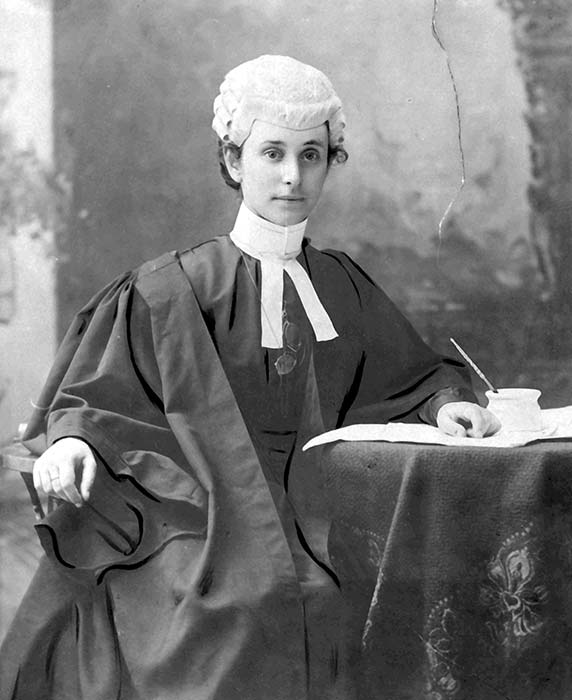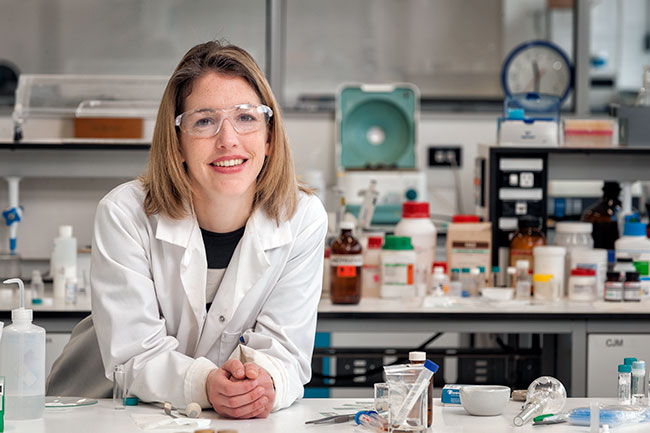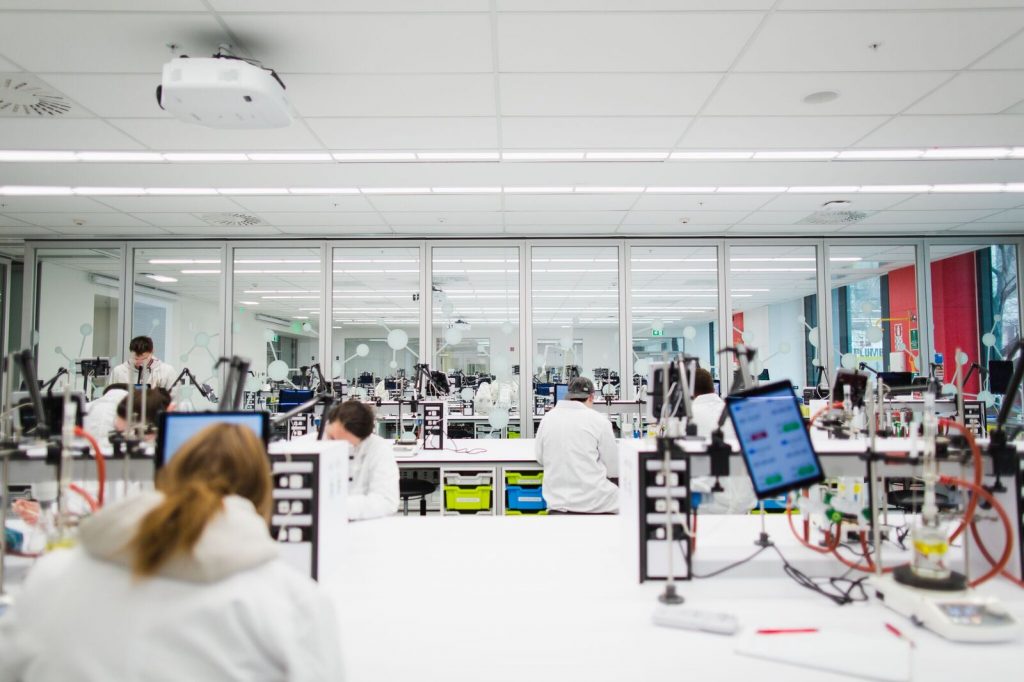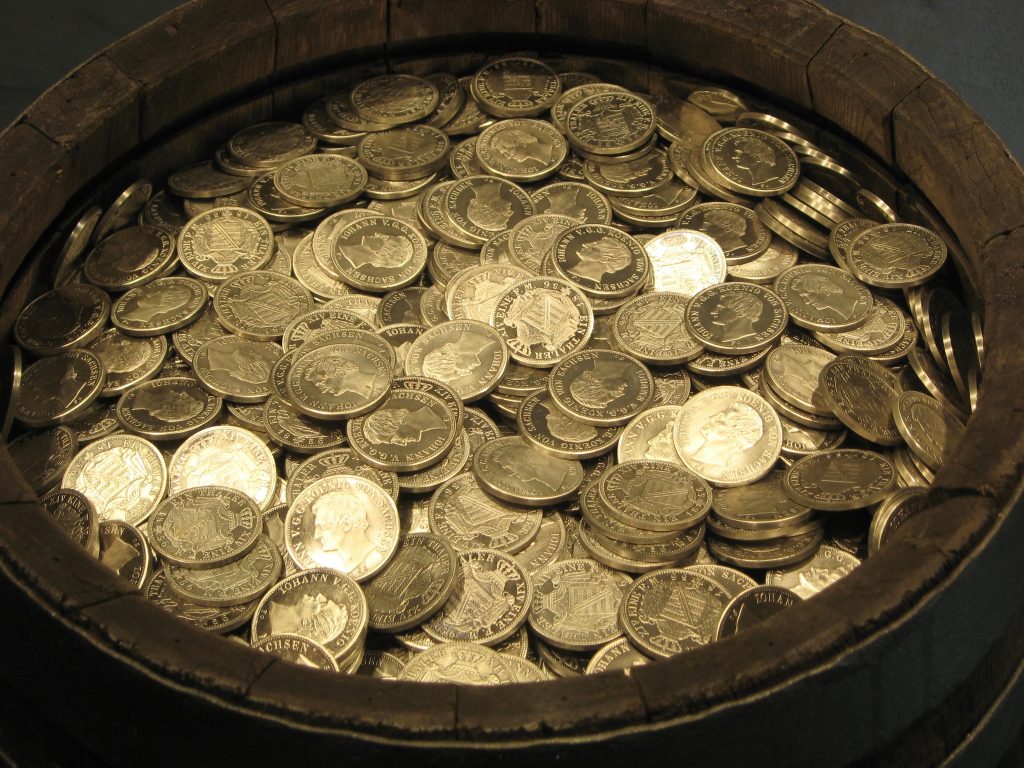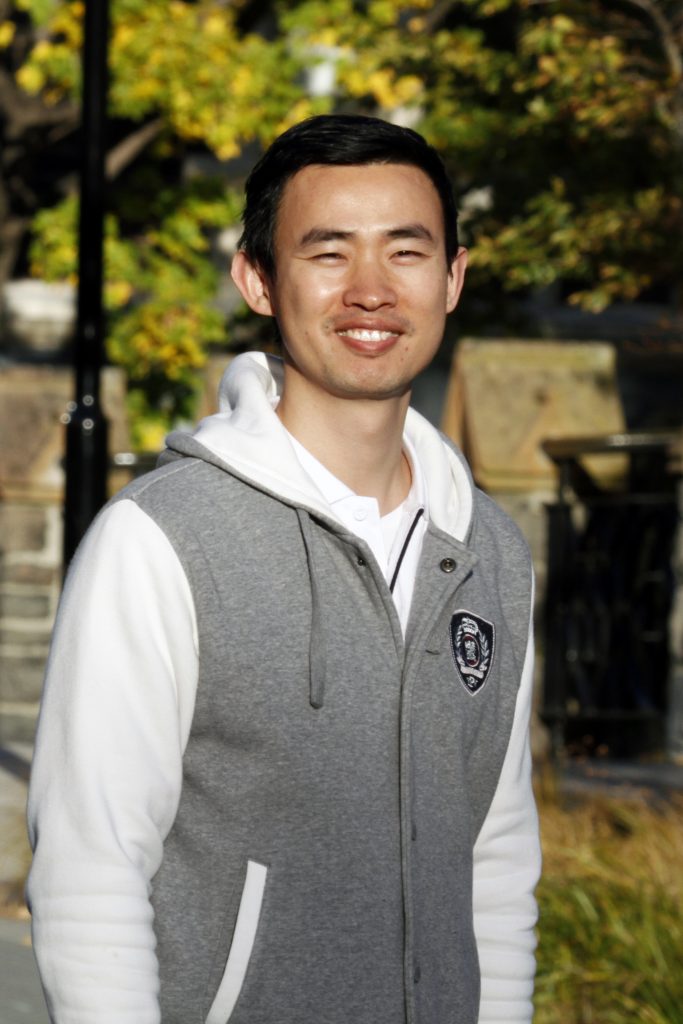Giving back – one international student’s remarkable journey
Growing up in an academic family, in Yangon, Myanmar, with an emphatic value placed on education, my parents always wanted to give me an education abroad.
As I had never been away from home and as parents they wanted somewhere their child would be safe and still be offered the quality education they were after, it is not surprising New Zealand was at the top of their list.
With an interest in biomedical sciences from an early age, together with my parents, I made the decision to study at the University of Otago, New Zealand’s first university with excellence in medical and biomedical research and teaching.
I started my affiliation with the University of Otago in 2001, firstly completing a foundation studies course before moving onto studying genetics. I received my Bachelor of Science Degree, with first class honours in Genetics in 2005, after which I worked as a research assistant both at the University of Otago and Massey University in order to have the skills to pursue my PhD in 2010. I was awarded a PhD in Microbiology in 2013.
Immediately after my BSc (Hons) graduation and my PhD graduation, I started my employment at the University of Otago. I am currently leading an international research programme combating tuberculosis (TB) in New Zealand and my home country Myanmar through a prestigious Sir Charles Hercus Research Fellowship awarded to me by the New Zealand Health Research Council.
How did you find the learning/teaching environment at Otago? Do you think it gave you the skills and knowledge to enable you to find employment?
I would say that my experience at Otago gave me a chance to discover myself and my purpose in life. I have always wanted to make a difference and to contribute back to the community. Therefore, I selected the health sector as my way of doing so, particularly TB, which daily claims 5,000 lives mainly from socioeconomically disadvantaged communities.
What was your experience with your lecturers/supervisors like? Were they approachable and helpful?
Lecturers and teaching fellows were so helpful and supportive. Some of them are my longstanding mentors, and I can proudly call them my lifetime friends.
How have you found the ‘culture’ of the students, staff, and people that work at the University of Otago?
The culture of the students and staff at the University is that we courageously keep on tackling big challenges, which is the reflection of the University’s motto “Dare to Be Wise”.
How would you describe the University of Otago to somebody who was thinking of studying as an international student at Otago?
Truly home away from home – when I first arrived here I felt homesickness. But people here at the University and in Dunedin are amicable and welcoming, so Dunedin quickly became my home away from home.
Did Otago met your expectations?
Exceeded.
How does it feel to be an Otago alumni?
I am a proud scarfie and a true University of Otago product (from Foundation Studies to PhD and now an employee of the University).
What is the best memory you have from your time at the University of Otago?
Unforgettable student experience – some of my best memories include my time at Cumberland College, a residential college I lived in first as a student and later as a residential assistant supporting other students. I am now a College Fellow at Cumberland, providing mentor ship to students within and beyond their academic life.
Nicky Richardson is an International Marketing Coordinator at the University of Otago. With degrees in music and marketing, both from Otago, she is passionate about education, and the places it can take you.
International Women’s Day – a look at the past, present and future of women at Otago.
International Women’s Day, the mere idea of this notion would have been considered ridiculous 150 years ago during the early days of Otago University. I think it is important on a day like today for everybody – men and women, to remember the women that came before. The women that literally paved the way for the women of today, and opened up doors that had been closed shut and bolted to women for time immortal. Today’s blog focuses on just a couple of these remarkable women (there are so many to mention), from the past, the present and is a reminder for the future that whilst we are still not yet on an equal playing field, much has been done and the collective attitudes of men and women including perceptions and behaviour can make a difference to future generations.
Caroline Freeman
You just cannot go past a discussion on International Women’s Day at the University of Otago without mentioning Caroline Freeman. In 1878 Caroline Freeman became the first matriculated woman to enrol at the University of Otago. At this time she lived in Green Island, which in those days required her to walk 11 kilometres after lectures in a long dress, through muddy wet tracks. Her health suffered as a result and she was forced to find accommodation in Dunedin. Her academic environment also proved to be hostile with Professor of Classics G.S. Sale, known to be a ‘veritable ogre’ to female students. A staff member once commented that had Freeman been a fighting man, rather an a studious woman, she would have been merited for her ‘pluck and perserverance.’ Caroline Freeman graduated in 1885, to a large applause with flowers thrown across the stage, and by the time of her capping 11 more women were enrolled at the university at different levels. Recognition of her courage, perserverance and passion for education was highlighted when the University of Otago named one of their residential colleges after her – Caroline Freeman College.
Emily Siedeberg
Next up on our list of those who paved the way is Emily Hancock Siedeberg. From an early age her father believed she should train as a doctor, she accepted this and the pair went through the process of enrolling her. Although the university council had already decided that medical training should be open to both women and men, her decision was certainly not celebrated – some showed enthusiasm while others were openly hostile. The dean of the Otago Medical School Dr John Scott was reluctant, but alongside other staff accepted the university’s decision so that in April 1891 Emily became a medical student, graduating in 1896 as New Zealand’s first woman medical graduate. During her time as a student she was told not to show her feelings, to keep men at a distance and not be frivolous. She went on to complete a BSc, and did postgraduate work in obstetrics, gynaecology and children’s diseases. In 1898 with considerable financial support from her father she registered as a medical practioner and set up private practice in Dunedin, which she maintained for the next 30 years.
Ethel Benjamin
Ethel Benjamin was New Zealand’s first woman lawyer – and we have to mention here that the University of Otago was the first university in Australasia to permit women to pursue a law degree – I don’t know about you, but permit? Seriously? It seems crazy now. This really shows how much these women had to fight for what is taken as a given today. Benjamin graduated with an Bachelor of Laws (LLB) in July 1897, and at her graduation she made the official reply on behalf of the graduands. This was the first time a current graduand rather than a past graduate had made the speech, and it was also the first occasion any woman had made an official speech at the university.
However the Otago District Law Society did not take kindly to a woman entering their male dominated profession. Discrimation against her included restricted access to the society’s library, an attempt to propose an alternative dress code to the wig and gown, her complete exclusion from annual bar dinners and whereas young members were usually offered support, she received little.
Vice Chancellor of the University of Otago – Professor Harlene Hayne
It is 2019 and the year that the university celebrates 150 years of education and achievement. When it comes to talking about present women at the University of Otago we cannot go past the fact that the Vice-Chancellor of our university is a woman. Effectively she is at the top of the food chain here, well above my rank and station, so I decided that Professor Hayne could probably address her own thoughts on International Women’s Day herself, in her own words, this excerpt was taken from the VC’s Comment – Issue 42. of the Otago Magazine:
Since my appointment as Vice-Chancellor in 2011, much has been made about my gender. I was the first woman to lead the Psychology Department at the University of Otago and the first woman to become a Deputy Vice-Chancellor. I am the first woman to be the Vice-Chancellor at the University of Otago and only the second woman to become a Vice-Chancellor in New Zealand.
Every time the issue of my gender is raised, however, it takes me by surprise. In the course of my own academic career, my gender has never been an issue. I have never felt that people have expected less of me because I am a woman, and I never felt that a glass ceiling prevented me from pursuing my goals and aspirations.
When I was growing up, my father used to tell me that girls could do anything. At Otago, I have certainly found that to be true. In this way, my own career has been remarkably gender blind.
But I recognise that the privilege of gender blindness is due, in part, to the historical period in which I live and to the places in which I have been lucky enough to grow up, study and work. I know too that I owe a huge debt of gratitude to those women who came before me.
As a university, we have a very proud history when it comes to women.
Dr Carla Meledandri
Dr Carla Meledandri from the Department of Chemistry is an expert in nanoscience, the world’s smallest particles, working at a scale of billionths of a metre. But don’t be fooled by her tiny content, she and her colleagues are looking to tackle the world’s largest problems – ranging from dental decay to climate change.
“Pushing the boundaries of fundamental research is vital – taking what we have found and applying it to solve problems follows on.”
Her expertise in nanoscience, working at a scale of billionths of a metre, helped win her the 2017 Prime Minister’s MacDiarmid Emerging Scientist Prize, the latest in a series of research awards.
Interdisciplinary collaborations with the Faculty of Dentistry have enabled the development of new materials designed to treat some of the causes of oral disease rather than the symptoms, hopefully leading to reduced costs and improving health worldwide.
The Future?
What about the women of the future? The young women like the ones pictured above who are exploring the world, educating themselves and finding out what makes them tick? Well, their future (and those of us who are somewhat further down the life journey) is down to all of us, men and women. We must learn from the past – celebrate success, challenge stereotypes, support each other, don’t accept pay inequality and not settle for anything less than our male counterparts, and that takes all of us. It’s all about balance. Happy International Women’s Day!
Special note to Te Ara – the Encyclopaedia of New Zealand for much of the historical content.
How will I learn at Otago?
If you are a new student to the University of Otago you will no doubt have a lot of questions……..and sometimes asking questions is challenging…..so, we are going to try to explain a few things here on our blog, like how do you learn at Otago? It might seem like a silly question, but trust us, no question is ever silly, and we have received a multitude of feedback from international students that suggests our teaching and learning style is different to other parts of the world. So, how will you learn here?
The Lecture
This will be your main source of information and knowledge for the majority of your studies. A lecturer, or a group of lecturers are assigned to teach each of the papers you are enrolled in. Lectures are held in specially designed rooms and last for 50 minutes – and the information is presented to you (as pictured) with verbal commentary following power point slides, printed material may be handed to you in class, including selected readings. Sometimes it may be tempting to miss a lecture, or two……(it is a beautiful sunny day and you’d rather be at the beach) but we urge you to not make this a habit – you’ve paid a lot of money to get this education, so be smart and take all the opportunities you can, including turning up to lectures.
The Lab
If you are studying towards a science or health science qualification, on top of lectures you will get used to spending a lot of your study time in laboratories, like the newly completed Mellor Laboratories pictured here. Here you will get the world renowned ‘hands on’ and practical learning style that we are so well known for here. This isn’t just sitting back and taking information in, this is you doing it all by yourself (with the guidance of a staff member of course!)
The tutorial
The tutorial is again something that we are really well known for – it’s a chance for more opportunity to really interact with staff and your fellow students. Tutorials, as opposed to lectures which can comprise of hundreds of students, are kept down to a smaller scale of approximately 10 students to one staff member. This gives you the chance to get one-on-one assistance, and the tutorial is also used as a way to help figure out the best way to go about an assignment, or to put you into teams to work on your skills working with others.
Self directed study
Another fact you may not know about studying at the University of Otago is that our academics believe you need to be self motivated in order to succeed. They can encourage, inspire and help, but ultimately you have to do the work. Making sure that you plan time to do the readings and to get onto the assignments ahead of the due date. Our tip? Buy a wall calendar/planner to outline all of your lectures/tutorials/labs and assignment deadline dates, it will really make life easier. It might sound a little dull, and something your parents might say, but we really do want these university years to be some of the best years of your life, so taking a little time to map things out will definitely help.
Nicky Richardson is an International Marketing Coordinator at the University of Otago. With degrees in music and marketing, she is a recent graduate of Otago herself – she loves Otago so much she ended up getting a job here!
Being Chinese in Dunedin – not as foreign as you think.
Coming to live and study in Dunedin from China may initially seem like a total cultural and geographical shock, but Chinese people coming to Dunedin in the 21st century are following in the steps of their forefathers. Dunedin has a long history and a growing connection with China and this is the focus of today’s blog.
The Gold Rush
The first Chinese miners began arriving in the 1860’s to the Otago Goldfields. The gold rush had already hit Arrowtown when these early miners started to arrive, but by 1876 more than 4000 miners were carefully picking over previously abandoned prospects.
Early immigrants came from the Pearl River delta area in Guangdong province. Most (67%) were from Panyu county; the rest were from Siyi, Zengcheng, Dongguan and Zhongshan. These counties are located near the city of Guangzhou formerly known as Canton.
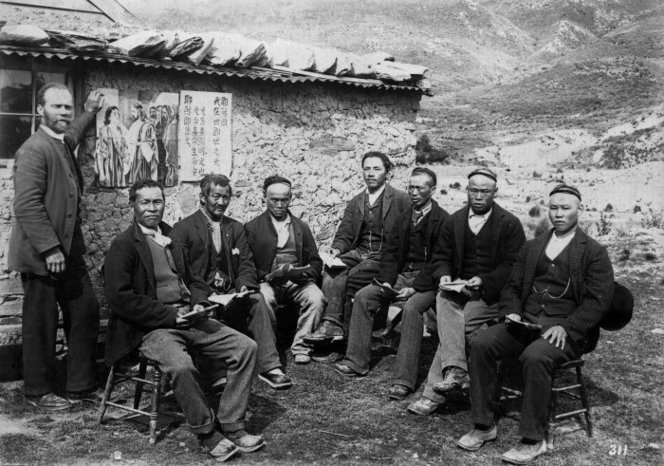
Chinese gold miners, with Mr Last in the middle, and Reverend Alexander Don on the far left, at the Kyeburn diggings circa 1900. Image courtesy of Te Puna Mātauranga o Aotearoa – National Library of New Zealand
Dunedin Chamber of Commerce
The Otago Goldfields attracted the first group of organised Chinese migrant workers. The Dunedin Chamber of Commerce (now the Otago Chamber of Commerce) recruited the workers when European miners left Otago to try their luck in the newly discovered West Coast goldfields. By late 1869, over 2,000 Chinese men had come to the land they would call the ‘New Gold Mountain.’
Many Chinese miners lived away from their European neighbours, without their families (who remained home in China) in extremely small, cramped and tiny cottages – no doubt a harsh existence during the freezing cold winters and scorching hot summers that Central Otago is renowned for. For more information on early Chinese migrants visit Te Ara – The Encyclopedia of New Zealand.
A fresh start
Immigration rules in New Zealand became more liberal in 1987, and new waves of Chinese migrants once again came to ‘New Gold Mountain,’ as their ancestors named New Zealand. Chinese migrants brought diverse skills and languages, and rich culture and traditions such as the lion dance and the lantern festival.
When the goldfields had been exhausted, many Chinese miners came to Dunedin to establish and run some of Otago’s early businesses. Their ancestors still call Dunedin home today.
A tale of two cities
In part due to the strong influence of Chinese in Otago’s history, the involvement of the local Chinese population and the wish to establish trusted business and trade opportunities Dunedin became sister city to Shanghai in October 1994.
The relationship is a driver behind Project Shanghai, a partnership of Dunedin businesses, educational institutions, the Otago Chamber of Commerce and the Dunedin City Council which aims to develop a broad range of links between the two cities.
A Dunedin Shanghai Association formed shortly after the relationship was formalised. The Association plays a key role in introducing and facilitating business, cultural, education and sports links between Dunedin groups and their Shanghai counterparts. It also hosts and facilitates a wide range of visitors and delegations from Shanghai. This role is reciprocated by the City of Shanghai in terms of visits to Shanghai by Dunedin delegations.
The Dunedin Chinese Garden
Once the sister city bonds had been formally recognised, talk began in 1998 of creating an authentic, traditional Chinese garden in Dunedin to recognise the contributions of the first Chinese people who came to Otago during the 1860’s and contributed so much both in commerce and culture over the years.
The Dunedin Chinese Garden’s design and construction was supervised and influenced by an architect from the Shanghai Construction and Decoration Company and the Shanghai Museum.
The Garden was pre-fabricated and assembled in Shanghai on a site identical in size and shape to that in Dunedin, then dismantled and transported here where it was reconstructed by artisans and supervisors from Shanghai.
The Dunedin Chinese Garden was blessed in June 2008, in the presence of Prime Minister Helen Clark and Chinese ambassador Zhang Yuanyuan and opened to the public on 8 June 2008. Prime Minister Clark returned to officially open the garden in September 2008.
Studying at the University of Otago
So, whilst the connections between China and Dunedin are historical and current, I am not Chinese – therefore I cannot give my perception on what it is like to live and study in Dunedin as a Chinese student at the University of Otago.
We caught up with Mike (Huang) Junjing who is here studying for a Bachelor of Physiotherapy (BPhty) to get his perspective as a Chinese student studying at the University of Otago and this video tells his story.
Take it away Mike…….
NB: The introduction is spoken in Chinese with Chinese subtitles, but the rest of the video is spoken in English with Chinese subtitles.
Nicky Richardson is an International Marketing Coordinator at the University of Otago. With degrees in music and marketing, she is a recent graduate of Otago herself – she loves Otago so much she ended up getting a job here!
NZ teachers lead the world – Otago teachers lead NZ!
New Zealand was ranked number one in the world for educating students for the future, according to a report by the Economist Intelligence Unit (EIU) released late last year.
Here at Otago for the sixth time in seven years, we have the top tertiary teacher in New Zealand! I’m sure we have all had teachers that we look back on and groan….but then there are those that inspired us, encouraged us and helped us become the best we could be….and we just happen to have that teacher (amongst many others passionate about their craft) here at Otago.
So who is this stand out teacher? And what are her thoughts on Otago? Faumuina Associate Professor Fa’afetai Sopoaga took time out from her busy schedule to have a chat to us about her journey……
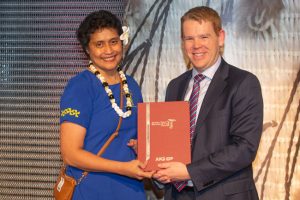
Faumuina Associate Professor Fa’afetai Sopoaga receives New Zealand’s top tertiary teaching award from the Minister of Education, Hon Chris Hipkins, at a ceremony at Parliament. Photos: Ako Aotearoa.
From a little girl growing up in a small island in Samoa, to winning the Prime Minister’s Supreme Award at the National Tertiary Teaching Excellence Awards, Faumuina has certainly come a long way.
“I came to New Zealand in the 1980’s – fresh off the boat – to train in Medicine at the University of Otago.”
Faumuina also received an Endorsement for Excellence in Supporting Pacific Learners, a reflection of her ongoing commitment to pastoral care and curriculum development of Pacific students. She is “delighted” that Pacific Health is being recognised as important in the training of future health professionals.
 “As an international student, coming from a small island in the Pacific (Samoa), the University could have been overwhelming. I thrived in the environment, met wonderful friends from many areas in the world including Asia, Europe, Africa, the Americas and of course Kiwis.”
“As an international student, coming from a small island in the Pacific (Samoa), the University could have been overwhelming. I thrived in the environment, met wonderful friends from many areas in the world including Asia, Europe, Africa, the Americas and of course Kiwis.”
Faumuina’s experience studying at Otago saw her face some major personal challenges, but ” through the excellent and supportive environment, I graduated despite developing a chronic illness (Lupus) while in training.”
Faumuina chooses to call Dunedin and NZ home now – “Dunedin is truly an international university city, its people are proud of this, and embrace all students from different ethnic backgrounds.”
But it is her experience studying and now teaching at the University that Faumuina and her husband (a first generation Canadian with Italian parents), choose to stay here…
“The University of Otago’s motto is ‘Dare to be Wise’ – students are offered every opportunity to excel here.”
Discover more about how Otago and New Zealand teachers could change your future.
Nicky Richardson is an International Marketing Coordinator at the University of Otago. With degrees in music and marketing, she is a recent graduate of Otago herself – she loves Otago so much she ended up getting a job here!




